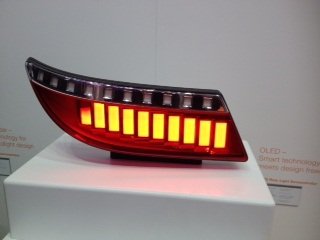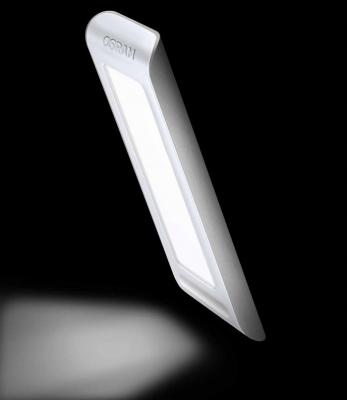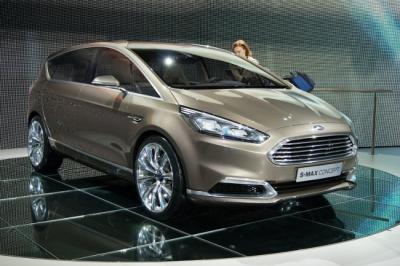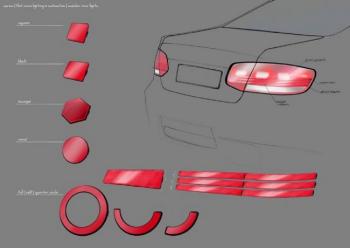Osram shows a hybrid LED-OLED car rear lamp prototype device
Osram unveiled a new hybrid LED-OLED car rearlamp prototype device. Osram suggests using the OLED for the turn indicator and the rear light itself, while the LEDs are used for the stoplight, reverse light and also in the turn indicator alongside the OLEDs.
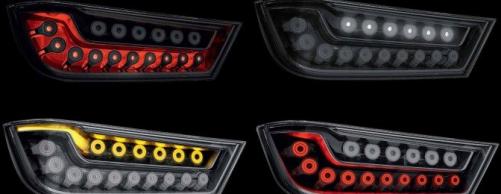
As you can see in the photo above, the device includes the four basic rear light functions: stoplight (LED and LED light guide, top left), reverse light (LED, top right), turn indicator (OLED and LED light guide, bottom left) and rear light (OLED only, bottom right).


